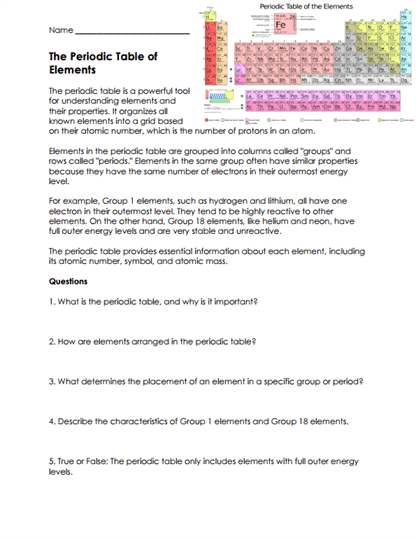Break Apart the PE Table

Worksheet Description
The worksheet gets well into the intricacies of the periodic table, a foundational tool in the study of chemistry. It describes how the table organizes elements based on their atomic number, representing the number of protons in an atom, and groups them into specific columns and rows, termed “groups” and “periods”, respectively. Highlighting the properties of elements within the same group, it uses Group 1 and Group 18 elements as specific examples. The worksheet also underscores the essential data that the periodic table provides about each element, such as its atomic number, symbol, and atomic mass.
To effectively engage with this worksheet, one should start by familiarizing themselves with the overall structure and layout of the periodic table. It’s essential to understand how elements are arranged based on their atomic number and the significance of their positions in specific groups and periods. Focusing on the unique properties of elements within specific groups, like Group 1 and Group 18, will further enrich the understanding. As they navigate through the content, students can then answer the questions provided, using the detailed explanations in the worksheet as a guide.
This worksheet aims to impart a robust understanding of the periodic table’s structure, organization, and significance in the realm of chemistry. By detailing how elements are arranged and grouped, it underscores the patterns and relationships that exist among them. The worksheet endeavors to emphasize the unique properties of elements based on their positions in specific groups, illustrating the practical applications and implications of these patterns. Ultimately, the worksheet seeks to equip students with a foundational knowledge of the periodic table, paving the way for deeper explorations in chemical studies.
